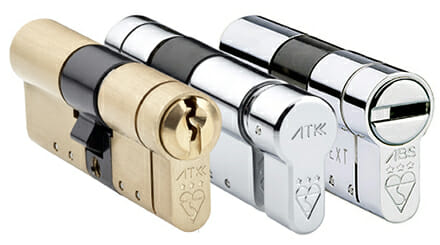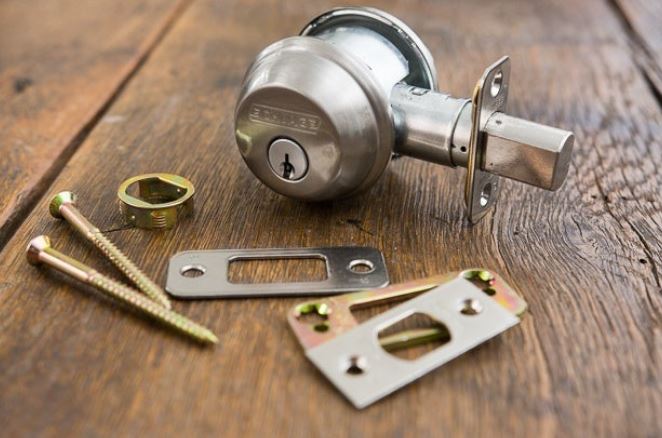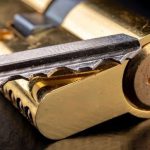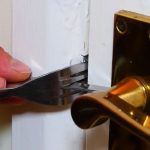
What is Most Secure Lock To Prevent Lock Snapping?
When it comes to home security, choosing a secure lock is crucial to prevent break-ins. One common method that burglars use to gain entry is lock snapping.
Lock snapping is a technique where the burglar applies force to a lock cylinder, causing it to break or snap. This method is particularly effective against standard euro cylinder locks, which are commonly found in many homes.
To prevent lock snapping and ensure the security of your home, it is important to invest in a lock that is designed to withstand this type of attack. One option is to choose a lock that has been tested and certified to the British Standard TS007 – a standard specifically developed to prevent lock snapping.
Look for locks that have achieved the highest level of TS007 certification, such as 3 stars. These locks have additional security features that make them more resistant to snapping, drilling, and picking.
By selecting a secure lock that has been tested and certified to prevent lock snapping, you can significantly enhance the security of your home and gain peace of mind knowing that your property is well protected.
Why Lock Snapping is a Serious Security Concern
Lock snapping is a method used by burglars to quickly and easily gain access to a property by exploiting a weakness in certain types of locks. This technique primarily targets Euro cylinder locks, which are commonly found in many homes and businesses.
It is important to understand why lock snapping is such a serious security concern. First and foremost, it is the most common method used by burglars to break into properties. This is because it requires minimal skill or effort, and the tools needed to snap a lock are easily accessible.
Lock snapping can happen in a matter of seconds, leaving your home vulnerable to intruders. Once the lock is snapped, the burglar can simply manipulate the lock mechanism to open the door. This means that even if you have other security measures in place, such as alarms or CCTV, they may be bypassed if the lock is compromised.
To prevent lock snapping, it is crucial to invest in secure locks that are specifically designed to resist this attack. Anti-snap locks have features that make them more resistant to snapping, such as reinforced materials and additional security pins. Additionally, installing security handles and cylinder guards can further enhance the security of your locks.
By choosing the most secure lock to protect your home from lock snapping, you can significantly reduce the risk of a break-in and ensure the safety of your property and loved ones. Don’t underestimate the importance of investing in high-quality, anti-snap locks – they can make a world of difference when it comes to preventing burglaries.
Understanding the Vulnerability of Standard Locks
When it comes to securing our homes, choosing the most secure lock is of utmost importance. Unfortunately, standard locks often fall short in terms of protecting our homes from the snapping technique used by burglars to gain quick and easy access.
Lock snapping is a method commonly employed by intruders to break standard cylinder locks. By applying force to a lock cylinder, they can snap it in half, leaving the lock mechanism exposed and rendering it useless.
Standard locks are especially vulnerable to snapping due to their inherent design flaws. The weak point lies in the cylinder, which is typically made from low-quality materials and lacks proper reinforcement against snapping attacks. Moreover, the lock handle can also be easily manipulated or unscrewed to gain access to the cylinder.
To prevent lock snapping, it is crucial to invest in a lock that is specifically designed to withstand this technique. The most secure locks are those that feature an anti-snap mechanism, which incorporates additional security layers and reinforced materials to resist snapping attempts.
Anti-snap locks are designed to protect against the snapping technique by incorporating features such as:
- Anti-snap cylinders: These cylinders are made from hardened materials, such as nickel or brass, and are engineered to break away at a specific point, rendering the remaining cylinder useless to the intruder.
- Reinforced lock handles: Locks with reinforced handles are more resistant to manipulation or unscrewing, making it difficult for burglars to gain access to the lock cylinder.
- Security pins: These pins are designed to make it harder for intruders to pick the lock. They are specifically designed to resist picking and manipulation attempts.
By understanding the vulnerability of standard locks and investing in an anti-snap lock, homeowners can significantly improve the security of their homes and protect themselves against lock snapping attacks.
The Different Types of Lock Snapping Attacks
When it comes to securing your home, it is important to be aware of the different types of lock snapping attacks that can compromise the security of your locks. Lock snapping is a common method used by burglars to break into homes that have vulnerable locks. By understanding the types of lock snapping attacks, you can choose a lock that is secure and resistant to these types of attacks.
Here are the most common types of lock snapping attacks:
- Cylinder Snapping: This is the most common type of lock snapping attack. It involves applying force to the lock cylinder, causing it to snap and separate from the locking mechanism. Once the cylinder is snapped, the burglar can easily manipulate the lock and gain entry to your home.
- Bullion Snapping: Bullion snapping is a more advanced form of lock snapping. It involves snapping both the cylinder and the bullion, which is the part of the lock that is responsible for providing extra security and resistance to attacks. By snapping both the cylinder and the bullion, the burglar can quickly gain access to your home.
- Anti-Snap Lock Attacks: Some locks are designed to be resistant to lock snapping attacks. These locks have additional security features that make it more difficult for burglars to snap the lock cylinder. However, even with these additional security features, it is still important to choose a lock that provides the highest level of resistance to lock snapping attacks.
By understanding the different types of lock snapping attacks, you can choose a lock that is secure and resistant to these attacks. It is important to choose a lock that has been tested and approved by relevant security standards, and that has additional security features to prevent lock snapping attacks.
What to Look for in a Snap-Resistant Lock
When it comes to protecting your home from lock snapping, it’s crucial to choose a secure lock that is designed to prevent this common method of break-in. Here are a few key factors to consider when looking for a snap-resistant lock:
|
Material: Opt for locks made of strong and durable materials, such as hardened steel or brass. These materials are resistant to snapping and provide added security. |
Design: Look for locks with an anti-snap design. These locks have reinforced sections that are specifically engineered to resist snapping attempts, making them much more secure. |
|
Cylinder: Check the lock’s cylinder type. Look for locks with a snap-resistant cylinder, such as an anti-snap euro cylinder. These cylinders are designed to prevent snapping, ensuring enhanced security. |
Security features: Consider locks with additional security features, such as anti-drill, anti-pick, and anti-bump capabilities. These features provide added protection against common methods used by burglars. |
|
Security certifications: Look for locks that have received industry-standard security certifications, such as the British Standard Kitemark or the Sold Secure certification. These certifications indicate that the lock has been tested and approved for its resistance to snapping. |
Professional installation: Lastly, ensure that the lock is installed by a professional locksmith. A properly installed lock can greatly enhance its snap-resistant capabilities and overall security. |
By considering these factors and choosing a lock that is designed to resist snapping, you can significantly improve the security of your home and protect it from this common break-in method.
The Benefits of Anti-Snap Cylinders
When it comes to choosing the most secure lock to protect your home from lock snapping, anti-snap cylinders are a popular choice. These cylinders are specifically designed to prevent lock snapping, a common method used by burglars to gain entry to homes.
Lock snapping involves applying force to the lock cylinder, causing it to snap and opening the door. This method is extremely common and can be carried out quickly and quietly, making it an appealing option for criminals.
By installing anti-snap cylinders, you can prevent this type of attack and greatly enhance the security of your home. Anti-snap cylinders are designed with an additional sacrificial section that breaks away when force is applied, leaving the rest of the lock intact. This means that even if the cylinder is snapped, the door remains secure and cannot be opened.
An additional benefit of anti-snap cylinders is that they often come with other security features, such as anti-drill and anti-pick pins. These features make it even more difficult for burglars to gain access to your home. With these added layers of security, you can have peace of mind knowing that your home is well-protected.
Furthermore, anti-snap cylinders are usually made of hardened materials, such as hardened steel or reinforced plastic. These materials are resistant to tampering and can withstand forceful attempts to break them. This adds an extra level of durability to your lock, ensuring that it will continue to provide protection for years to come.
In conclusion, anti-snap cylinders offer numerous benefits when it comes to securing your home. They prevent lock snapping, one of the most common methods used by burglars, and provide additional security features to make it even more difficult for criminals to gain access. With their durable materials, these cylinders offer long-lasting protection for your home. Investing in anti-snap cylinders is an effective way to increase the security of your property and give yourself peace of mind.
Choosing the Right Lock Grade for Your Security Needs
When it comes to preventing lock snapping, it’s important to choose a lock that is resistant to this common method of forced entry. There are various grades of locks available, with each grade offering different levels of security. By selecting a lock with the highest grade, you can significantly increase the security of your home.
The most secure locks are typically those that are tested and approved by reputable organizations, such as the British Standards Institution (BSI). These locks undergo rigorous testing to ensure they can withstand various forms of attack, including snapping, picking, and drilling.

Lock snapping is a method used by burglars to quickly and easily break a lock cylinder, allowing them access to the property. This method involves applying force to the cylinder in order to snap it at its weakest point, which is usually the center.
To prevent lock snapping, it’s important to choose a lock that has been specifically designed to resist this type of attack. Look for locks that have been tested to the highest grade, such as BS 3621 or TS007. These locks feature reinforced cylinders and high-security mechanisms that are resistant to snapping.
It’s worth noting that even the most secure lock can be compromised if it is not installed correctly. For maximum security, it’s recommended to have your lock installed by a professional locksmith who is experienced in fitting anti-snap locks.
Remember, investing in a high-quality lock is an investment in your home’s security. By choosing the right lock grade for your security needs, you can have peace of mind knowing that your home is protected against lock snapping and other forms of forced entry.
In conclusion, when selecting a lock to protect your home from lock snapping:
- Choose a lock that has been tested and approved by reputable organizations.
- Look for locks that have been specifically designed to resist lock snapping.
- Consider the lock grade, such as BS 3621 or TS007.
- Have your lock installed by a professional locksmith for maximum security.
By following these guidelines, you can ensure that your home is well-protected and secure against lock snapping.
Additional Features to Consider for Enhanced Security
When choosing a lock to secure your home and prevent lock snapping, there are several additional features that you should consider. These features can enhance the security of your lock and provide added protection against forced entry.
Anti-Snap Technology: Look for locks that have anti-snap technology built in. This feature is designed to prevent the snapping of the lock cylinder, which is a common method used by burglars to gain entry. Anti-snap locks are constructed with a sacrificial segment that will break away if attacked, leaving the lock secure and intact.
Anti-Pick Pins: Locks with anti-pick pins provide an extra layer of security by making it more difficult for thieves to pick the lock. These pins are designed to engage with the lock mechanism in a way that makes it harder to manipulate and pick the lock open.
Key Control: Consider locks that offer key control features. With key control, you can ensure that unauthorized key copies cannot be made without your knowledge or consent. This can help prevent anyone from gaining access to your home with a duplicated key.
Reinforced Strike Plates: Reinforced strike plates are an important feature to consider, as they provide added strength and protection to the area around the lock. These plates are often made from heavy-duty materials, such as steel, and are designed to prevent forced entry through kicking, prying, or other forms of physical attack.
Restricted Keyway: Choose locks with a restricted keyway to improve security. A restricted keyway means that the lock’s key can only be duplicated by authorized locksmiths or with proper authorization. This helps ensure that key copies cannot be made without your knowledge, reducing the risk of unauthorized access to your home.
By considering these additional features, you can enhance the security of your lock and protect your home from lock snapping and forced entry.
The Importance of Professional Installation
When it comes to choosing the most secure lock to protect your home from lock snapping, it is essential to also consider the importance of professional installation. Even the most high-quality and advanced lock can be rendered ineffective if it is not properly installed.
Lock snapping is a method that burglars use to quickly and easily break into a home by exploiting a weakness in the lock cylinder. This common form of forced entry can be prevented by installing an anti-snapping lock, but only if it is done correctly.
Professional locksmiths have the knowledge and expertise to ensure that the lock is installed in the most secure manner possible. They can assess your door and recommend the best type of lock for your specific needs. Additionally, they will have the necessary tools and techniques to properly install the lock, including reinforcing the door frame if needed.
By having a professional install your lock, you can have peace of mind knowing that your home is protected by the highest level of security measures. A properly installed lock will greatly reduce the risk of lock snapping and deter potential burglars.
In conclusion, choosing the most secure lock is just one piece of the puzzle. To truly protect your home from lock snapping, it is crucial to invest in professional installation. Don’t take any chances with your home’s security – let the experts handle it.
Comparing Different Lock Brands and Models
When it comes to securing your home, choosing the right lock is crucial to prevent break-ins. There are various lock brands and models available in the market, each offering different levels of security. In this section, we will compare some of the most secure locks and analyze their features.
1. Brand X Lock: This lock is known for its durability and strength. It has a unique cylinder design that prevents lock snapping, making it one of the most secure locks on the market. Additionally, it features advanced anti-picking and anti-drilling mechanisms, ensuring maximum protection.
2. Brand Y Lock: This lock is highly regarded for its advanced security features. It incorporates a multi-point locking system, preventing forced entry through lock snapping. It also has an anti-bump feature, making it resistant to bumping attacks. Additionally, it has a reinforced strike plate, further enhancing its security.
3. Brand Z Lock: This lock is widely known for its excellent resistance against lock snapping. It utilizes a specially designed anti-snapping technology that makes it virtually impossible to break. It also features anti-pick pins and a hardened steel core, making it one of the most secure locks available.
Remember, the level of security provided by a lock relies on multiple factors, including the quality of installation. It is essential to consult a professional locksmith for proper installation and to ensure that the chosen lock meets your specific security needs.
- Brand X Lock:
- Unique cylinder design
- Advanced anti-picking and anti-drilling mechanisms
- Brand Y Lock:
- Multi-point locking system
- Anti-bump feature
- Reinforced strike plate
- Brand Z Lock:
- Anti-snapping technology
- Anti-pick pins
- Hardened steel core
Understanding Lock Certification and Testing Standards
When it comes to choosing the most secure lock to protect your home from snapping, it is important to understand lock certification and testing standards. These standards ensure that the locks you choose have undergone rigorous testing and meet specific security requirements.
There are several certifications and testing standards that you should look for when selecting a lock:
- British Standard (BS) – Locks that meet the BS 3621 standard have been tested against snapping, picking, and drilling techniques commonly used by burglars. This certification is widely recognized and recommended by insurance companies.
- European Standard (EN) – Locks that meet the EN 1303 standard have been tested for durability, security, and resistance to snapping, picking, and drilling.
- SS312 Diamond – This certification is specific to locks sold in the UK and ensures that they meet the highest standards of security. Locks with this certification have been tested against snapping, picking, drilling, and bumping.
- Secured by Design (SBD) – This is a police initiative in the UK that certifies products, including locks, that have been designed to reduce crime and meet high security standards.
When choosing a lock, look for certifications and testing standards from reputable organizations. These certifications provide assurance that the lock you choose has been thoroughly tested and meets specific security requirements. Remember, investing in a secure lock is an investment in the safety and security of your home.
Steps to Take to Protect Your Home from Lock Snapping
Lock snapping is a common method used by burglars to gain entry into homes. This technique involves breaking the lock cylinder, causing the lock to easily snap and giving the intruder access to your property. To ensure the security of your home and prevent lock snapping, it is important to take the following steps:
| 1. Install a secure lock | Choose a lock that is specifically designed to resist snapping, such as an anti-snap cylinder lock. These locks have additional features that make them resistant to this method of attack. |
| 2. Upgrade your existing locks | If you already have locks installed, consider upgrading them to anti-snap cylinders. This will provide an extra layer of security and make it much more difficult for burglars to snap the lock. |
| 3. Reinforce doors and frames | In addition to installing secure locks, reinforce your doors and frames to make them more resistant to forced entry. This can be done by installing door reinforcement plates or using security chains. |
| 4. Install a door viewer | A door viewer, also known as a peephole, allows you to see who is outside your door without opening it. This can prevent you from unknowingly opening the door to a potential intruder. |
| 5. Use additional security measures | Consider installing additional security measures such as alarm systems, security cameras, and motion sensor lights. These can act as a deterrent and make your home less attractive to burglars. |
By taking these steps, you can significantly reduce the risk of lock snapping and enhance the security of your home. Remember, investing in high-quality, secure locks is key to protecting your property from this common break-in method.
Q&A:
What is lock snapping?
Lock snapping is a method commonly used by burglars to quickly and easily break open a lock. They apply force to the lock cylinder, causing it to snap and expose the internal mechanism, allowing them to manipulate it and gain entry.
How can lock snapping be prevented?
Lock snapping can be prevented by installing anti-snap locks. These locks are designed with a break-away mechanism that will snap off in the event of an attempted break-in, but leave the internal mechanism intact, preventing access to the lock. It is important to choose a lock with a high security rating and to make sure it is installed correctly.
What should I look for when choosing an anti-snap lock?
When choosing an anti-snap lock, it is important to consider the security rating. Look for locks that meet the British Standard TS007 or the Sold Secure Diamond Standard, as these are the highest ratings for anti-snap locks. It is also recommended to choose a lock that has additional security features, such as anti-drill and anti-pick mechanisms.
Are all anti-snap locks the same?
No, not all anti-snap locks are the same. There are different levels of security that can be found in anti-snap locks, ranging from basic to high-security options. It is important to choose a lock that meets your specific security needs and to ensure that it is installed correctly to maximize its effectiveness.



